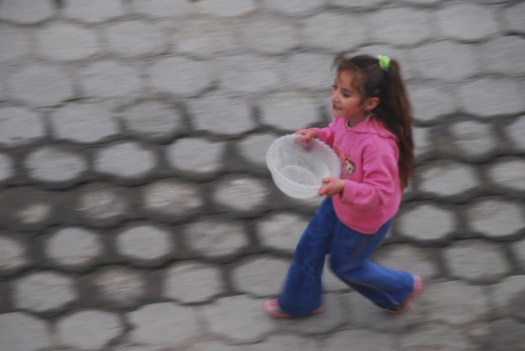Though narrowing a year’s adventure down to pick out our top ten experiences is a nearly impossible task, we tried to do it anyhow. After all, it seems to be what everyone most wants to know. So here it is, the ten experiences we most loved, ordered not by rank but in the order in which we did them.
1. Hiking Torres del Paine
Of all the landscapes we saw on our trip, I think the mountains of Torres del Paine were the most majestic. The sheer beauty of this place was breathtaking for each and every moment of the four days we spent hiking the W.
2. Traveling the Inca Trail to Machu Picchu
Machu Picchu itself is mindboggling and not just because of the altitude. The amazing architecture and well-preserved state of this city in the sky wowed us. But what made seeing it really special was the intense three days of hiking through the Andes that we had to do to reach it. We also got to enjoy the company of my brother Gregory on this part of the adventure.
3. Cruising the Galapagos
This was eight days of pure bliss. From swimming with sea lions, sharks, and penguins, to laughing at the antics of blue-footed boobies, to marveling at the beauty of the natural landscape, to watching the stars rise from the deck chairs of our catamaran, our experience in the Galapagos was top-notch. It was far and away the most budget blowing of our adventures, but it was worth every single penny.
4. Living it Up in Buenos Aires
An apartment in a nice neighborhood, big steak dinners, ice cream every day (at least once), and a visit from my parents…our stay in Buenos Aires was like a vacation within a vacation. The city is vibrant and easy to get around with great architecture and atmosphere and tons to do.
5. Going on Safari in southern Africa
We saw our first lion in Kruger, got up close and personal with rhinos in Hluhluwe Imfolozi, encountered more elephants than we could count in Addo, found a few new species at Mountain Zebra, and became king of cheetah spotting in Etosha. We did a lot of safari-ing and never once got tired of it. In fact, I’m ready to go again.
6. Seeing the Surreal Landscapes of Namibia
Namibia might not have many inhabitants but they sure do have impressive landscapes. At Fish River Canyon, in the Quiver Tree Forest, atop the red dunes of Sossusvlei, in the forests of Naukluft, or along the Caprivi Strip, we were pretty much constantly snapping photos.
7. Meeting the Lovely People of Likoma Island
Until we ended up there, Likoma Island was never even on our radar. Malawi was supposed to be more of a pitstop on our way up east Africa, but it turned into one of our favorite spots. There’s not a lot to do on Likoma Island besides lounge on the beach and enjoy the turquoise waters of Lake Malawi, but the people are among the most friendly, welcoming, and fun loving that we met on our journey. I think we wore a constant smile the entire week we were there.
8. Trekking with Uganda’s Mountain Gorillas
Bwindi Impenetrable Forest is not a misnomer as trekking through the dense forest is not easy, but every step is worth it for the opportunity to spend one hour in the presence of mountain gorillas. These magnificent creatures left us all awestruck. They are impressive in size, in expressiveness, in the way they reflect so much of us and we of them. Another pricey experience, but again worth every penny. Plus we had the good fortune to get to share the experience with Jeff’s parents and sister.
9. Learning to Scuba Dive
Experienced scuba divers claim that once you start, you can’t stop, and they know what they’re talking about. We’re already addicted and can’t stop thinking about when and where we can next dive. Take any of the underwater shows you’ve ever seen and multiply the magic quotient by 100. It’s that good.
10. Exploring Rajasthan
India was tough, but we did greatly enjoy our foray into Rajasthan. The forts, palaces, and heritage hotels preserved fantastic architecture and the feeling of glory days now gone. Though hassle was still present, it was low in comparison to other parts of the country, and we met some very friendly and interesting locals. This seemed to be the India of lore.




































































































































You must be logged in to post a comment.